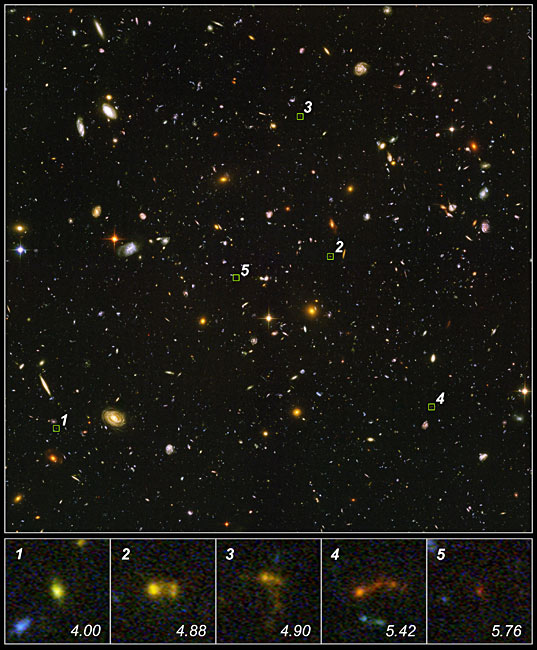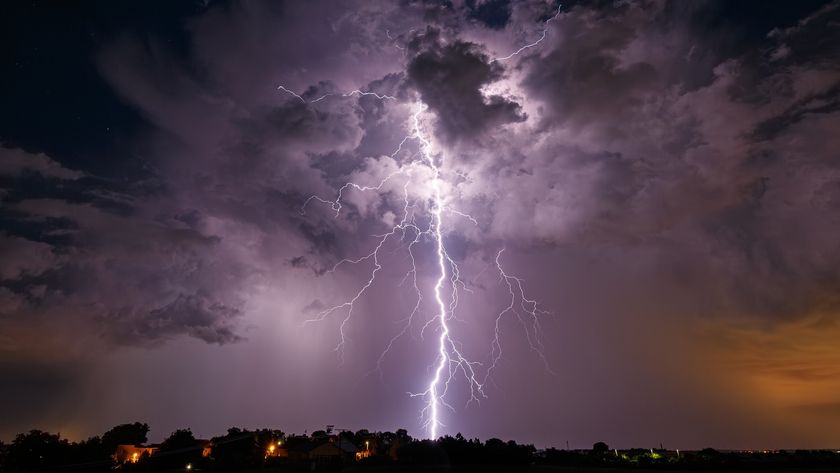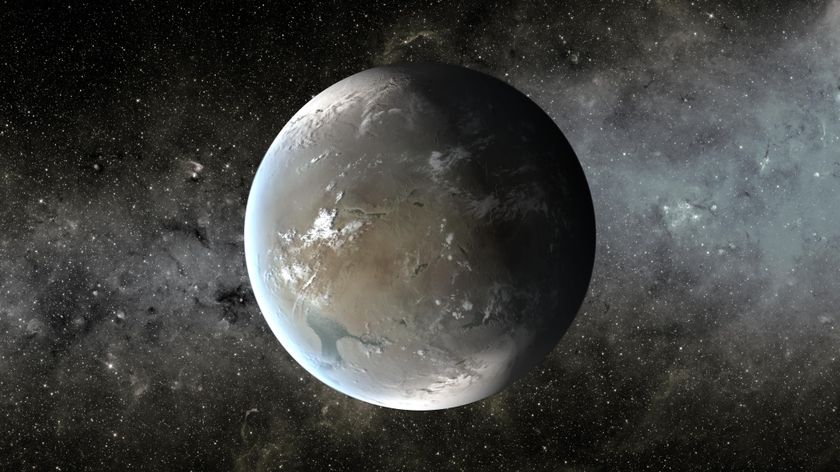Tiny Galactic Building Blocks Spotted

Astronomershave found nine of the faintest, tiniest and most compact galaxies ever seen.
The littleobjects are hundreds to thousands of times smaller and vastly younger than ourMilky Way, lending support to a ?building block? theory in which hundreds ofthe tiny galaxies merge together and form larger bodies of stars.
"Theseare among the lowest mass galaxies ever directly observed in the earlyuniverse," said Nor Pirzkal of the Space Telescope Science Institute in Baltimore, Md.
Pirzkalsaid their petite mass, observed by the Hubble Space Telescope and confirmed bythe Spitzer Space Telescope, shows these galaxies are some of the smallestbuilding blocks of the universe, aside from stars themselves.
The twotelescopes saw light emitted from the galaxies only 1 billion years after thetheoretical Big Bang, giving arare glimpse into the past. Sangeeta Malhotra, an astronomer at Arizona State University who helped make the discovery, said the absence of infrared lightin the sensitive Spitzer images showed the stars are first-generation and onlya few million years old.
"Theseare truly young galaxies without an earlier generation of stars," Malhotrasaid.
Hubbledetected hot blue stars within the nine galaxies, indicating that the youthfulstars are in the process of turning hydrogen and helium into heavier elementslike carbon, oxygen and silicon necessary forplanet-building--and life. The astronomers speculated, however, that suchstars probably haven't begun to "pollute" space with the crucialelements forging within their cores.
Get the Space.com Newsletter
Breaking space news, the latest updates on rocket launches, skywatching events and more!
Thedevelopment of three of the galaxies appears to be slightly disrupted; ratherthan taking on a rounded-blob shape typical of the youngest galaxies, they're stretchedinto tadpole-like forms. Astronomers think it may signal their first fusionwith neighboring galaxies to form larger, cohesive structures.
Thegalaxies were observed in the Hubble Ultra Deep Field (HUDF) image with Hubble'sAdvanced Camera for Surveys and the Near Infrared Camera and Multi-ObjectSpectrometer. Observations were also done with Spitzer's Infrared Array Cameraand the European Southern Observatory's Infrared Spectrometer and Array Camera.
- GALLERY: Hubble's Greatest Hits
- VIDEO: Fixing Hubble
- VOTE: The Best of Hubble Images
Join our Space Forums to keep talking space on the latest missions, night sky and more! And if you have a news tip, correction or comment, let us know at: community@space.com.
Dave Mosher is currently a public relations executive at AST SpaceMobile, which aims to bring mobile broadband internet access to the half of humanity that currently lacks it. Before joining AST SpaceMobile, he was a senior correspondent at Insider and the online director at Popular Science. He has written for several news outlets in addition to Live Science and Space.com, including: Wired.com, National Geographic News, Scientific American, Simons Foundation and Discover Magazine.












